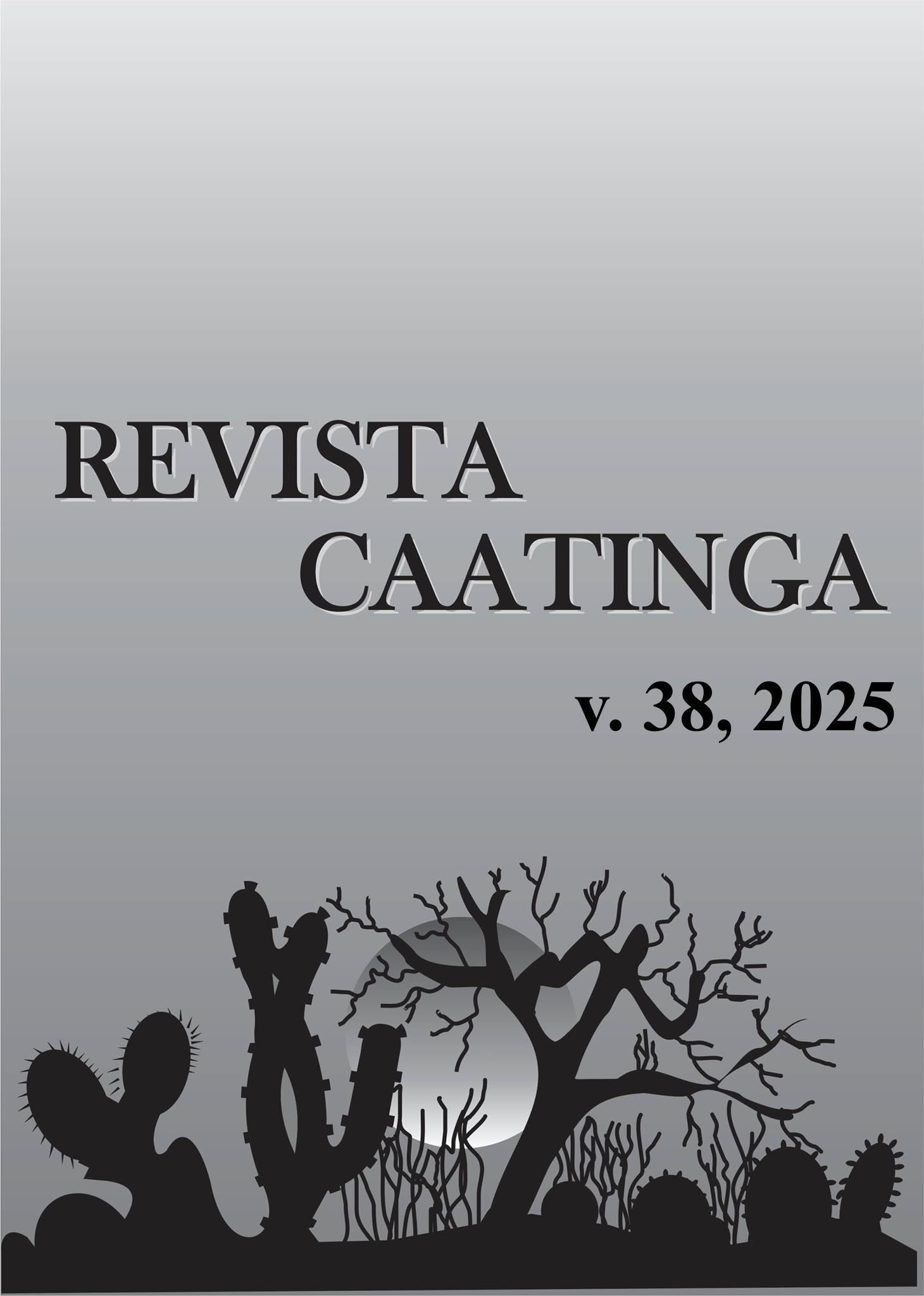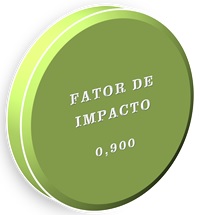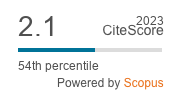Tolerance of watermelon varieties to salt stress during early development
DOI:
https://doi.org/10.1590/1983-21252025v3812874rcKeywords:
Salinity. Citrullus lanatus. Growth. Emergence. Chlorophyll.Abstract
Excess salts in water used for irrigation in the semi-arid region cause losses in growth and yield of cucurbits, such as watermelon. However, the choice of salinity-tolerant varieties can reduce the impact of stress on crop yield. Thus, the objective of this study was to evaluate the tolerance of watermelon varieties to irrigation water salinity during initial development. The experiment was conducted in a protected environment located at the Federal Rural University of the Semi-arid Region, Mossoró, RN, Brazil, in a randomized block experimental design in a 7 x 3 factorial scheme with four replicates, consisting of seven cultivars (Rochedo F1, Crimson Select, Charleston Gray, Fairfax, Crimson Sweet, Sugar Baby, Preciosa) and three irrigation water salinity levels (0.5, 4.5, and 9.0 dS m-1). Increasing irrigation water salinity reduced emergence, growth, and dry mass accumulation in seedlings. There was a tendency for photosynthetic pigments of watermelon seedlings to increase with increasing salts in the irrigation water, indicating that the time of exposure to salt stress was not sufficient to significantly reduce the levels of chlorophyll a, chlorophyll b and total chlorophyll. The Rochedo F1, Crimson Select and Fairfax varieties showed greater tolerance to salinity, while Sugar Baby and Preciosa were classified as moderately sensitive to electrical conductivity levels of 4.5 and 9.0 dS m-1 in the irrigation water.
Downloads
References
ALVARES, C. A. et al. Köppen’s climate classification map for Brazil. Meterologissche Zeitschrift, 22, 711-728, 2013.
AYERS, R. S; WESTCOT, D. W. A qualidade de água na agricultura. 2. ed. Campina Grande, PB: UFPB, FAO, 1999, 153 p. (Estudos Irrigação e Drenagem, 29 revisado).
BANTIS, F.; KOUKOUNARAS, A. Ascophyllum nodosum and Silicon-Based Biostimulants Differentially Affect the Physiology and Growth of Watermelon Transplants under Abiotic Stress Factors: The Case of Salinity. Plantas, 12: 1-12, 2023.
BEZERRA, F. T. C. et al. Produção de mudas de Talisia esculenta sob irrigação com água salina em substrato com hidrogel. Comunicata Scientiae, 13, 1-12, 2022.
BRASIL. Ministério da Agricultura, Pecuária e. Abastecimento. Regras para análise de sementes. Brasília, DF: MAPA/ACS, 2009. 395 p.
DINIZ, G. L. et al. Uso de Trichoderma spp e estresse salino na produção de mudas de melancia. Revista em Agronegócio e Meio Ambiente, 15: 1-16, 2022.
FAGERIA, N. K.; GHEYI, H. R.; SOARES FILHO, W. S. Manejo da Salinidade na agricultura: estudos básicos e aplicados. In: GHEYI, H. R.; DIAS, N. S.; LACERDA, C. F. Melhoramento genético vegetal e seleção de cultivares tolerantes à salinidade. Fortaleza: INCTsal, 2010. cap. 13, p. 212-225.
FERREIRA, D. F. Sisvar: A computer analysis system to fixed effects split plot type designs. Brazilian Journal of Biometrics, 37: 529-535, 2019.
HAIR JÚNIOR, J. F. et al. Análise Multivariada de Dados. 6. ed. Porto Alegre, RS: Bookman, 2009. 688 p.
IBGE - Instituto Brasileiro de Geografia e Estatística. Produção de melancia. Available at: https://www.ibge.gov.br/explica/producao-agropecuaria/melancia/br. Access on: Mar. 21, 2023.
MAGUIRE, J. D. Speed of Germination-Aid In Selection And Evaluation for Seedling Emergence And Vigor. Crop Science, 2: 176-177, 1962.
MEDEIROS, J. F.; LISBOA, R. A.; OLIVEIRA, M. Caracterização das águas subterrâneas usadas para irrigação na área produtora de melão da Chapada do Apodi. Revista Brasileira de Engenharia Agrícola e Ambiental, 7: 469-472, 2003.
MELO, R. E.; SILVA, A. E. B.; SILVA, J. R. Turnos de rega e polímero hidroretentor na qualidade de frutos de melancia em condições de semiárido. Revista Eletrônica Cientifica Inovação e Tecnologia, 12: 22-33, 2021.
NÓBREGA, J. S. et al. Acúmulo de biomassa e pigmentos fotossintéticos em plantas de Mesosphaerum suaveolens (L.) Kuntze sob estresse salino e doses de ácido salicílico. Research, Society and Development, 9: e121953286, 2020a.
NÓBREGA, J. S. et al. Salinidade e ácido salicílicono desenvolvimento inicial de melancia. Revista Desafios, 7: 1-10, 2020b.
OLIVEIRA, A. M. D. et al. Produção de mudas de melancia em diferentes ambientes e de frutos a campo. Revista Ceres, 62: 87-92, 2015.
ONDRASEK, G. et al. Salt stress in plants and mitigation approaches. Plants, 11: 1-21, 2022.
PANDOLFI, C. et al. Acclimation improves salt stress tolerance in Zea mays plants. Journal of Plant Physiology, 201: 1-8, 2016.
PEREIRA, I. C.; CATÃO, H. C. R. M.; CAIXETA, F. Seed physiological quality and seedling growth of pea under water and salt stress. Revista Brasileira de Engenharia Agrícola e Ambiental, 24: 95-100, 2020.
PEREIRA, K. T. O. et al. Priming cycles with salinity tolerance elicitors in seeds of Mimosa caesalpiniifolia and Pityrocarpa moniliformis. Biologia, 79: 411-424, 2024.
PRAXEDES, S. S. C. et al. Tolerance of seedlings traditional varieties of cowpea (Vigna unguiculata) to salt stress. Semina: Ciências Agrárias, 41: 1963-1974, 2020.
SÁ, F. V. S. et al. Exogenous application of phytohormones mitigates the effect of salt stress on Carica papaya plants. Revista Brasileira de Engenharia Agrícola e Ambiental, 24: 170-175, 2020.
SCHWARZ, D. et al. Grafting as a tool to improve tolerance of vegetables to abiotic stresses: Thermal stress, water stress and organic pollutants. Scientia Horticulturae, 127: 162-171, 2010.
SILVA JUNIOR, F. B. et al. Morphophysiology and inorganic solutes in watermelon irrigated with brackish water in different planting systems. Revista Caatinga, 36: 833-842, 2023.
SILVA, A. C. et al. Efeito de diferentes doses, formas de aplicação e fontes de P na conservação de melancia sem sementes. Horticultura Brasileira, 34: 526-536, 2016.
SILVA, J. S. et al. Morphophysiology of mini watermelon in hydroponic cultivation using reject brine and substrates. Revista Brasileira de Engenharia Agricola e Ambiental, 25: 402-408, 2021.
SILVA, P. C. C. et al. Seed priming with H2O2 improves photosynthetic efficiency and biomass production in sunflower plants under salt stress. Arid Land Research and Management, 36: 283-297, 2022.
SOUSA, G. G. et al. Production of watermelon seedlings in different substrates under salt stress. Revista Brasileira de Engenharia Agrícola e Ambiental, 27: 343-351, 2023.
TAIZ, L. et al. Fisiologia e desenvolvimento vegetal. 6. ed. Porto Alegre, RS: Artmed, 2017. 888 p.
YANG, S. H. et al. Modulation of vacuolar H+-pumps and aquaporin by phytohormones in rice seedling leaf sheaths. Biological and Pharmaceutical Bulletin, 26: 88-92, 2003.
Downloads
Published
Issue
Section
License
Os Autores que publicam na Revista Caatinga concordam com os seguintes termos:
a) Os Autores mantêm os direitos autorais e concedem à revista o direito de primeira publicação, com o trabalho simultaneamente licenciado sob a Licença Creative Commons do tipo atribuição CC-BY, para todo o conteúdo do periódico, exceto onde estiver identificado, que permite o compartilhamento do trabalho com reconhecimento da autoria e publicação inicial nesta revista, sem fins comerciais.
b) Os Autores têm autorização para distribuição não-exclusiva da versão do trabalho publicada nesta revista (ex.: publicar em repositório institucional ou como capítulo de livro), com reconhecimento de autoria e publicação inicial nesta revista.
c) Os Autores têm permissão e são estimulados a publicar e distribuir seu trabalho online (ex.: em repositórios institucionais ou na sua página pessoal) a qualquer ponto antes ou durante o processo editorial, já que isso pode gerar alterações produtivas, bem como aumentar o impacto e a citação do trabalho publicado (Veja O Efeito do Acesso Livre).







